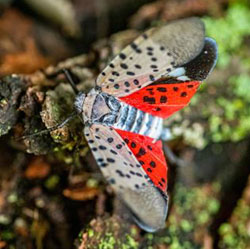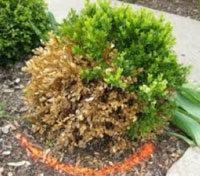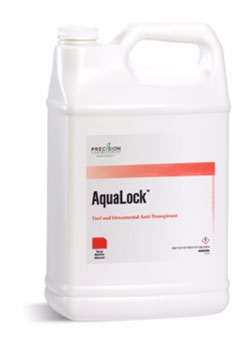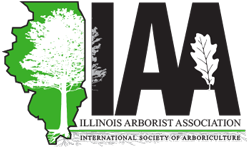October 2023
SPOTTED LANTERNFLY IDENTIFIED IN ILLINOIS
Nuisance Pest—Does Not Present Human or Animal Health Concerns

SPRINGFIELD, IL—The Illinois Department of Agriculture has confirmed the first detection of spotted lanternfly (Lycorma deliculata) in Illinois. Following a report of a live adult on Sept. 16, state, federal, and local officials coordinated a site visit near the area of the report and identified a moderately populated area of spotted lanternfly (SLF) on Sept. 18. Specimens were collected and submitted for identification, and confirmatory results were received on Sept. 26. The spotted lanternfly does not present any human or animal health concerns.
"If there is a silver lining associated with spotted lantern fly in Illinois, it is that we have no reason to believe that widespread plant or tree death will result from its presence," said Scott Schirmer, Illinois Department of Agriculture's Nursery and Northern Field Office Section Manager. "This is likely going to be a nuisance pest that interferes with our ability to enjoy outdoor spaces and may have some impact on the agritourism industry, including orchards, pumpkin patches, and vineyards."
"Spotted lanternfly has been inching closer to the Midwest and Illinois for close to a decade," said Jerry Costello II, Illinois Department of Agriculture Director. "We have had a multi-agency team working to prepare for this scenario - including efforts on readiness, informing and educating the industry and the public, as well as monitoring early detection,"
The spotted lanternfly is an invasive plant hopper native to eastern Asia. First found in the U.S. in southeastern Pennsylvania in 2014, SLF has continued to spread throughout the eastern U.S. and recently into the Midwest. Confirmed identifications of SLF have been recorded in Indiana, Michigan, and Ohio, in addition to some eastern and southeastern states.
SLF feeds on a wide variety of plants, including a strong affinity to the invasive tree of heaven (TOH), grapes (both wild and cultivated), and maple trees. These plants should be targeted for any monitoring activities. When feeding, SLF produces honeydew, a sticky liquid that often coats or accumulates on the foliage and other parts of plants. SLF is believed to move easily on wood surfaces and products, vehicles such as trains, outdoor articles, and more—making it a challenging pest to contain and anticipate. Prevention and early detection are vital to limiting its ability to move and intrude upon new areas.
Persons are highly encouraged to report any believed sightings of SLF to lanternfly@illinois.edu. Photos are necessary to verify a report and to aid in identification.
"IDOA is working with federal and local partners to determine the full extent of the infestation," said Dr. Michael Woods, Division Manager of Natural Resources. "Although we cannot determine with any degree of certainty how SLF has arrived here, efforts are being undertaken to understand its movement and behavior better."
The research and regulatory communities continue learning about SLF, its behaviors, potential impacts, and effective management strategies - despite ongoing endeavors to minimize its spread and the associated impact on industry and natural resources.
PROTECT YOUR CUSTOMERS' EVERGREENS THIS WINTER

Anti-desiccant spray applied in the fall coats the foliage of your plants with this layer of organic "sealant" to help the plants resist the drying power of winter winds and conserve the moisture vital to their good health. Properly applied, a winter protection spray will safeguard your valuable plants through the cold months and gradually break down as warm weather approaches, and your trees and shrubs begin spring growth.
Turf & Ornamental anti-Transpirant

Dealing with environmental stress is a constant battle. Preventing damage brought on by freezing winter temperatures and exposure to salt can be addressed easily. AquaLock is a unique wax dispersion that forms a thin, flexible, water-repellent layer on plant surfaces. AquaLock protects plants against drought, extreme temperatures, wind, and sunscald. AquaLock may extend watering intervals for turf and ornamental crops.
Features & Benefits
- Will not clog nozzles
- Washes easily off spray equipment
- Free of volatile organic compounds
- Stable at temperatures above freezing
PRODUCT #434517 — (2 x 2.5 gal)
INDUSTRY EVENTS
IAA Annual Conference & Trade Show

November 6-8, 2023
Tinley Park Convention Center [map]
EVENT DETAILS
 ILCA ANNUAL PARTY AND MEMBER MEETING ILCA ANNUAL PARTY AND MEMBER MEETING
Thurs., November 9, 2023
Join us for a fun evening of networking, recognizing achievements, food, and BEER!
The Member Meeting will feature:
- Past President Farewell from Jeff Kramer, Kramer Tree Specialists
- Recognizing 25 and 50 Year Members
- Sponsor Thank You
- Committee of the Year Announcement
The Annual Party will feature:
- Dinner
- 2 Hour Open Bar
- Networking and Fun
When: November 9, 2023, 5pm - 8pm CDT
Where: Joe’s Live 5441 Park Pl, Rosemont, IL 60018 [map]
MORE INFORMATION
2023-24
Snow Prep Guide
|
2023-24
Catalog
|
“Remember, you have only one ride through life, so give it all you got and enjoy the ride.”
—Jon Gordon
|